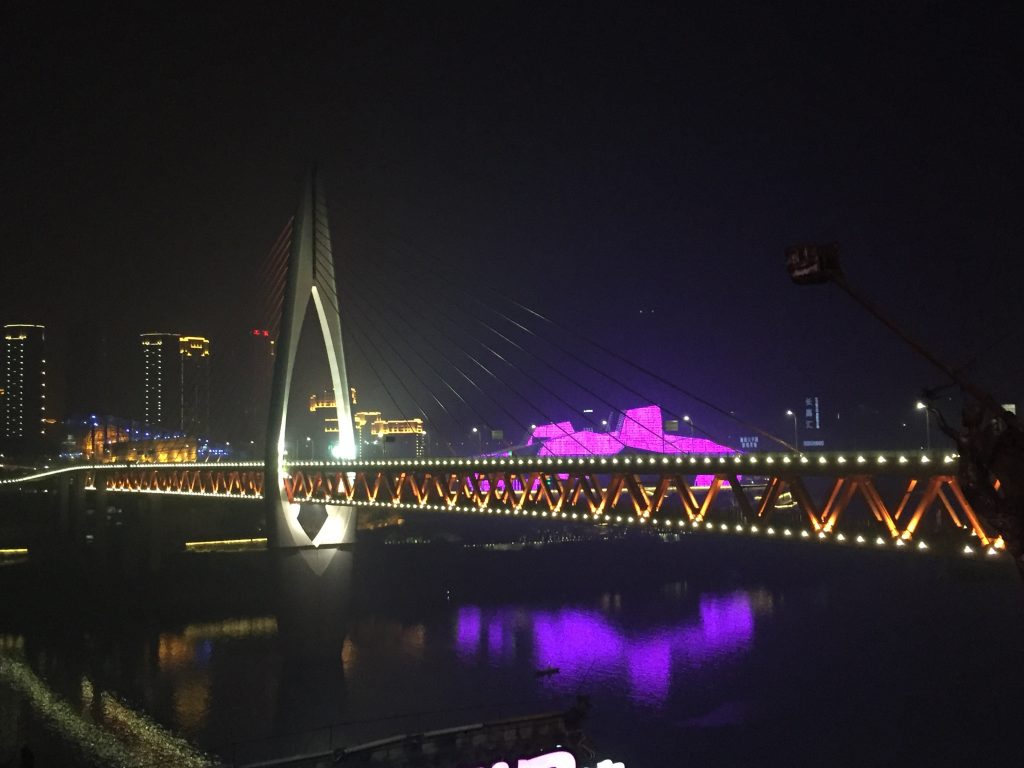在中国十月的第一个星期是国庆节的假期 。我和我的朋友们自从 到中国一直想利用这些假期去外地旅游。因此,我们十月一号动身去重庆, 经过十四个小时的火车旅程,我们终于到重庆了。虽然重庆现在不算四川,可是在历史上跟四川有关系,直到1997年才是四川的一部分。其实,一些很有名的川菜来源于重庆,比如火锅。去重庆之前我们想象重庆是一个很普通,没有特点的超大城市,可是它居然出乎我们的意料。从它壮丽的晚上城市风光到老城很漂亮的巷子,我们不禁爱上这个叫我们吃惊的城市。我最生动的回忆是走在河边的洪崖洞,在一边看楼上挂着的灯笼,在另一边看现代大楼多彩的灯光。真的代表重庆传统中国和现代中国的交融。

Chongqing at night
ENGLISH:
In China, the first week of October is the National Day holiday. Ever since my friends and I arrived in China we have wanted to take advantage of the holidays to travel around different places in China. With this in mind, on the first of October we set off for Chongqing. After a fourteen-hour train journey we finally arrived in Chongqing. Although Chongqing is not Sichuan, it has historically been linked with the province and until 1997 was a part of Sichuan. In fact, some famous Sichuanese dishes actually come from Chongqing, for example Hot Pot. Before coming to Chongqing we imagined it to be a humdrum, characterless city, but it surprisingly exceeded all our expectations. From its magnificent night time cityscape to the pretty alley ways of the old town, we couldn’t help but fall in love with this city which was full of surprises. We of course took the opportunity to sample Hot Pot whilst in the city and as expected it packed an extremely spicy punch. Many Chinese people had warned me that as a Westerner I would not be able to tolerate it, but I’m glad to say I survived the experience unscathed! My most vivid memory is walking by the riverside area of Hongyadong, looking at the traditional Chinese lanterns on one side and the multicoloured, modern city lights on the other. It truly represented Chongqing’s blend of modern and traditional China. For a city often presented as a polluted concrete jungle, it proved to be a pleasant surprise before we travelled on to Sichuan.
